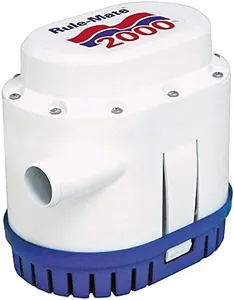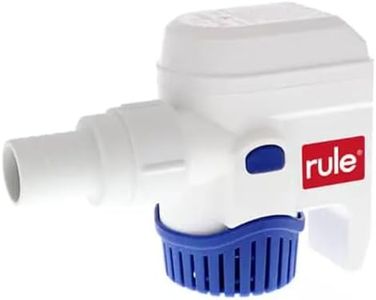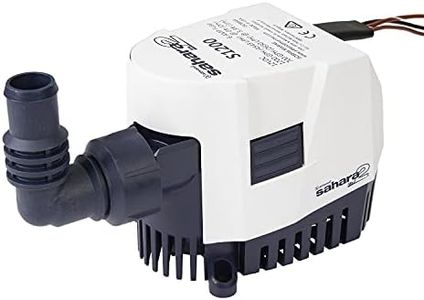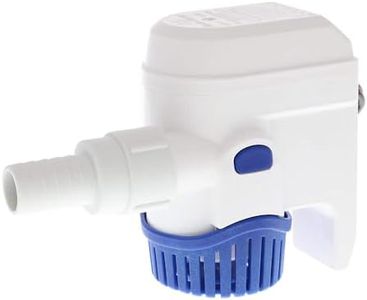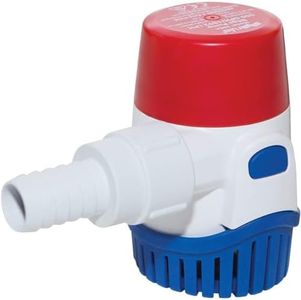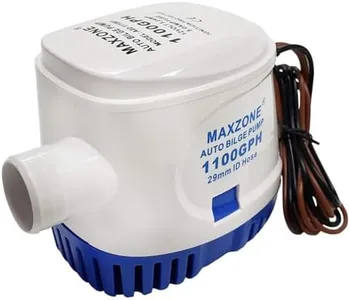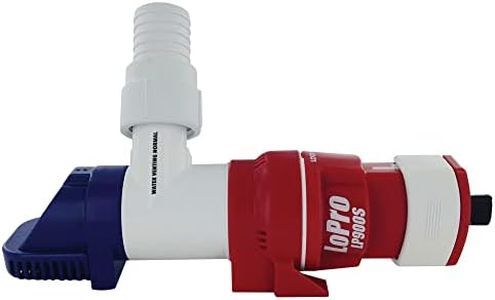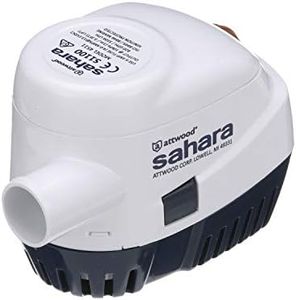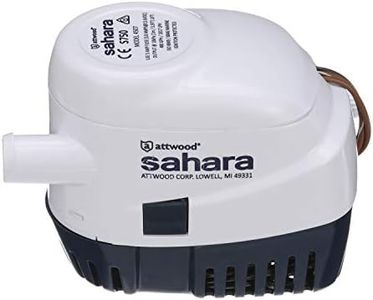We Use CookiesWe use cookies to enhance the security, performance,
functionality and for analytical and promotional activities. By continuing to browse this site you
are agreeing to our privacy policy
10 Best Automatic Bilge Pumps
From leading brands and best sellers available on the web.Buying Guide for the Best Automatic Bilge Pumps
Choosing an automatic bilge pump is essential for anyone who owns a boat, as it helps to keep your vessel dry by automatically removing water that builds up in the bilge. The right pump protects your boat and lets you focus on enjoying your time on the water without constant worry. When shopping for a bilge pump, you’ll want to think about how often your boat is in the water, the size of your boat, and the amount of water that could potentially accumulate. Understanding the main features and specs will help ensure you select the best pump for your safety and peace of mind.Flow Rate (GPH or LPH)Flow rate tells you how much water the pump can move in a certain time, typically measured in gallons per hour (GPH) or liters per hour (LPH). This is important because a higher flow rate means the pump can remove water faster, which is crucial in emergencies. Small pumps usually range from 500 to 1,200 GPH, while larger ones can reach 2,000 GPH or more. For smaller boats that are always docked or rarely take on much water, a smaller flow rate may be enough. For bigger boats or those exposed to rough weather, a higher flow rate is more suitable. Think about your boat’s size and how much water it might take on when deciding.
Automatic SwitchThe automatic switch is the feature that turns the pump on and off without you needing to be there. This is vital because it ensures the pump will start working the moment water is detected in the bilge, offering round-the-clock protection. Some pumps have built-in automatic sensors, while others need a separate float switch. Pumps with integrated sensors are more convenient, but if you want more control or already have a reliable switch, a manual or separate automatic switch might be better. Choose a fully automatic pump for the most hands-free safety.
VoltageVoltage refers to the electrical power system the pump is compatible with, usually 12V or 24V for most recreational boats. It’s essential to match the pump’s voltage to your boat’s battery system so it runs efficiently and safely. Most small and mid-sized boats use 12V, while larger or commercial vessels might use 24V. Check your boat’s power supply, and pick a pump that matches to avoid issues or damage.
Discharge Outlet SizeDischarge outlet size determines what size hose you need to expel the water from the bilge. Larger outlets can move water more easily and are important for high-capacity pumps. The most common sizes are 3/4 inch, 1 inch, or 1-1/8 inch. If you're replacing a pump, try to match the outlet size to what is already installed. For new installations, choose a size that matches your boat’s plumbing and minimizes restrictions for smooth water flow.
Construction MaterialThe material of the pump affects how well it stands up to the marine environment. Pumps are made from various plastics and stainless steel. High-quality corrosion-resistant plastic or stainless-steel components help the pump last longer in saltwater and withstand knocks and vibration. If your boat is in saltwater or used a lot, choose a pump with durable, marine-grade materials for reliability.
Ease of MaintenanceEase of maintenance refers to how simple it is to clean or service the pump, including removing debris from the strainer. Pumps with accessible housing or snap-off covers make it much easier to keep your pump working properly. If you want to do quick checks and cleaning, look for pumps designed for easy access so you can sort out issues quickly while out on the water.
